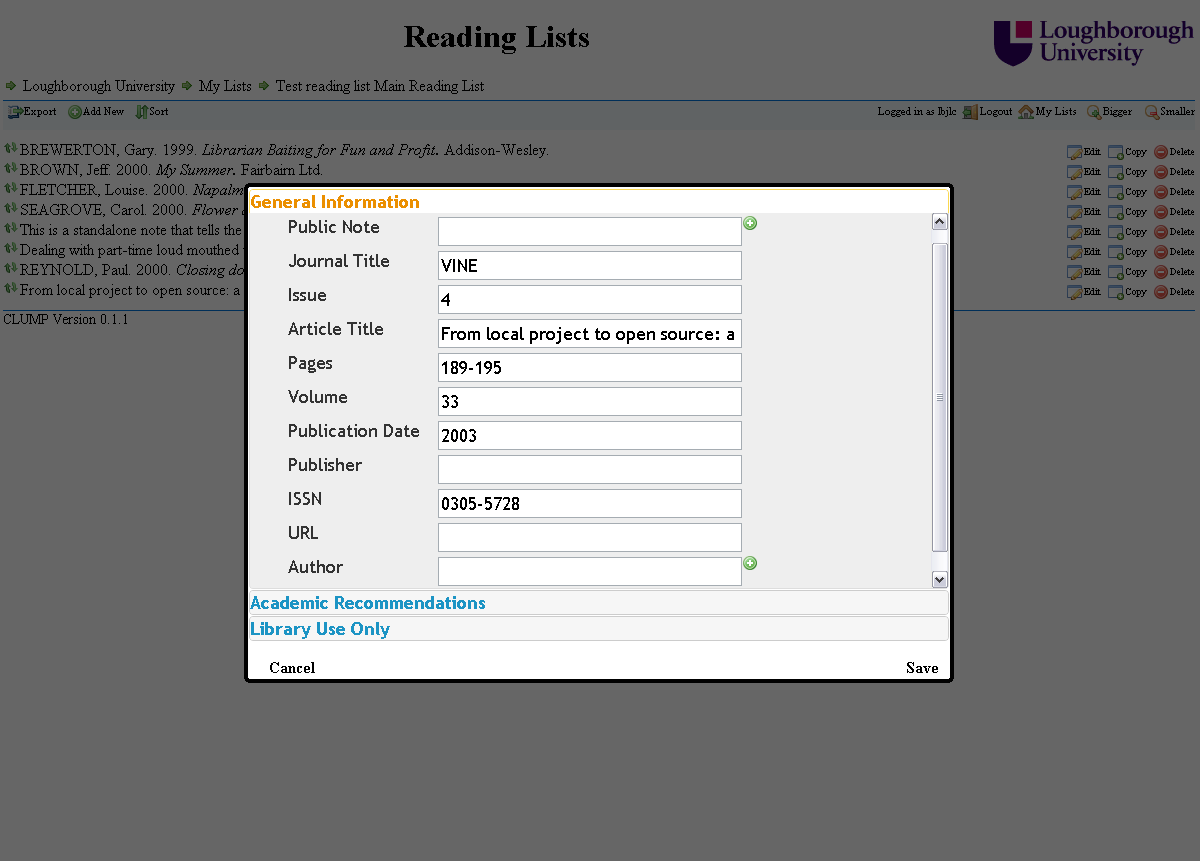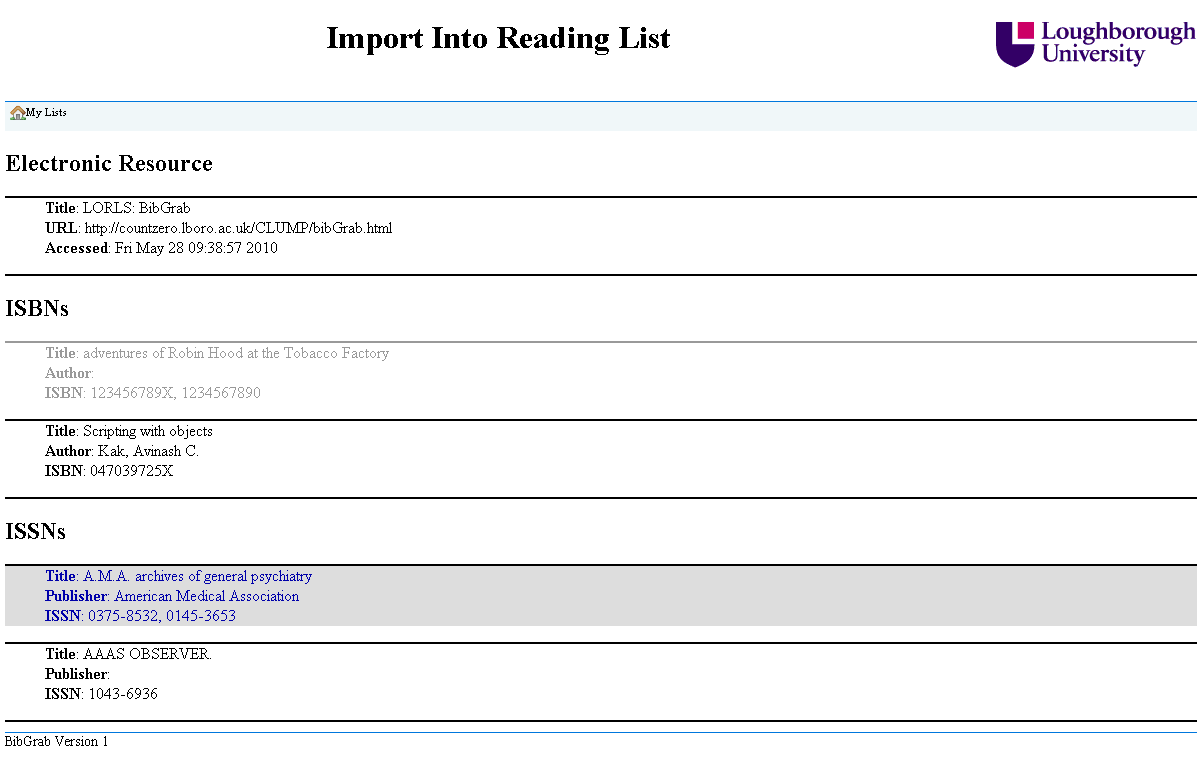BibGrab
Trouble installing? Disable SELinux
We are currently working on a new distribution of LORLS (That’s right version 7 is coming soon) and to test the installer’s ability to update an existing installation we needed a fresh v6 install to test on. So I dropped into a fresh virtual machine we have dedicated specifically to this kind of activity, downloaded the version 6 installer and ran through the installation only to find that, while it had created the database and loaded the initial test data just fine, it hadn’t installed any of the system files.
So for the next 3 hours I was scouring apache’s logs, checking the usual culprits for these sort of issues and debugging the code. One of the first things I did was check the SELinux configuration and it was set to permissive, which means that it doesn’t actually block anything just warns the user. This lead me to discount SELinux as the cause of the problem.
After 3 hours of debugging I finally reached the stage of having a test script that would work when run by a user but not when run by apache. The moment that I had this output I realised that while SELinux may be configured to be permissive, it will only pick up this change when the machine is restarted. So I manually tried disabling SELinunx (as root use the command ‘echo 0 > /selinux/enforce’) and then tried the installer again.
Needless to say the installer worked fine after this, so if you are installing LORLS and find that it doesn’t install the files check that SELinux is disabled.
LORLS v6 unleashed
In the early hours of yesterday morning LORLS v6 slipped its keepers (Jon and Jason) and escaped into the wild. LORLS v6 is described as flexible open source resource/reading list management system. Alongside LORLS v6 its three children (LUMP, CLUMP and BibGrab) also successfully made their breaks for freedom.
Members of the public are advised to check the following safety guidelines before approaching the beast.
AJAX performance boosts
Just recently I have been looking at tweaks that I can make to improve the performance of CLUMP. Here are the ones that I have found make a difference.
Set up apache to use gzip to compress things before passing them to the browser. It doesn’t make much difference on the smaller XML results being, but on the large chunks of XML being returned it reduces the size quite a lot.
Here is an extract of the apache configuration file that we use to compress text, html, javascript, css and xml files before sending them.
# compress text, html, javascript, css, xml:
AddOutputFilterByType DEFLATE text/plain
AddOutputFilterByType DEFLATE text/html
AddOutputFilterByType DEFLATE text/xml
AddOutputFilterByType DEFLATE text/css
AddOutputFilterByType DEFLATE application/xml
AddOutputFilterByType DEFLATE application/xhtml+xml
AddOutputFilterByType DEFLATE application/rss+xml
AddOutputFilterByType DEFLATE application/javascript
AddOutputFilterByType DEFLATE application/x-javascriptAnother thing is if you have a lot of outstanding AJAX requests queued up and the user clicks on something which results in those requests no longer being relevant then the browser will still process those requests. Cancelling them will free up the browser to get straight on with the new AJAX requests.
This can be very important on versions 7 and below of Internet Explorer which only allow 2 concurrent connections to a server over http1.1. If the unneeded AJAX requests aren’t cancelled and just left to complete then it can take Internet Explorer a while to clear the queue out only processing 2 requests at a time.
The good news is that Internet Explorer 8 increases the concurrent number of connections to 6, assuming that you have at least a broadband connection speed, which brings it back into align with most other browsers.
BibGrab
For a long time we have been told that staff want an easy way to add an item to a reading list. To make item entry easier the data entry forms for LORLS v6 are specific to the type of item being added. This should help avoid confusion when people are asked for irrelevant metadata (e.g. asking for an ISBN for a web page).
Recently I have been working on BibGrab our tool to allow staff to add items to their reading list from any web page that has an ISBN or ISSN on it. BibGrab consists of two parts. The first part is a piece of JavaScript that is add as bookmark to their browser, then when they select that bookmark in future the JavaScript is run with access to the current page. The second part is a CGI script that sits along side CLUMP that processes the information and presents the options to the users.
The bookmark JavaScript code first decides what the user is wanting it to work with. If the user has selected some text on the page then it works with that otherwise it will use the whole page, this helps if there are lot of ISBNs/ISSNs on the page and the user is only interested in one of them.
It then prepends to that the current pages URL and title, which lets BibGrab offer the option of adding the web page to a reading list as well as any ISBNs/ISSNs found. This information is then used to populate a form that it appends to the current page. The form’s target is set to ‘_blank’ to open a new window and the action of the form is set to the CGI script. Finally the JavaScript submits the form.
The CGI script takes the input from the form and then searches out the web page details the JavaScript added and any possible ISBNs and ISSNs. The ISBNs and ISSNs then have their checkdigit validated and any that fail are rejected. The remaining details are then used to put together a web page, that uses JavaScript to lookup the details for each ISBN and ISSN and display these to the user. The web page requires the user to be logged in, as it is using CLUMP’s JavaScript functions for a lot of the work it can see if they have already logged into CLUMP that session and if they haven’t it can then ask them to login.
Once logged in they can see all the items that BibGrab found.
When they select an item they are then presented with all the details for that item and if it is a journal they are also presented with some boxes for adding in details to specify a specific article, issue or volume. They are also presented with a list of their reading lists, of which they can select as many as they like and when they click add the item is added to all their selected reading lists. The item is added to the end of each reading lists and is in a draft mode. This makes it easier for people to add items to their reading lists when they find them without worrying how it will affect their list’s layout.
After the item has been added to their chosen reading lists it is grayed out as a visual indication that it has already been used. They can still select it again and add it to even more reading lists if they want or they can select another item to add to their reading lists.
BibGrab Proof Of Concept
One tool on our list of things required for LORLS v6 is BibGrab for which we have just finished the proof of concept. It finds ISBNs and ISSNs from web pages and looks up their metadata on COPAC.
The main piece of functionality missing from the proof of concept is the ability to actually add an item to a reading list. As well adding this functionality we are also aiming to make it pick up details about the web page it was initiated on so that staff can add web pages to their reading lists.
While the current source to used to lookup metadata is hard coded, the release version should have a number of sources to it can use and an order of preference for them. This way the metadata will match that of the local LMS if it has a matching record and only try other sources if it doesn’t.
Reading Lists: Friend or Foe?
The title above refers to a half day WESLINK event on reading lists which I was lucky enough to be invited to on Wednesday. The event was hosted at Keele (big shout out to my SatNav for finding the place). It started with a buffet lunch, followed by presentations from three institutions on how they currently manage their reading/resource lists:
- Spreadsheets at Keele University
- Talis List at the University of Birmingham
- LORLS at Loughborough University (by yours truly).
The day finished with a group discussion. One of the main things I picked up from this was the differences in approach as to who edits the reading lists. Some sites were strongly in favour of the library being responsible to all editing of online reading lists. At Loughborough we’ve always been keen for academics to edit the lists themselves, after all they are the intellectual creators of the lists.
It also seems very inefficient for the library to re-enter information into a system when the academics are most likely already doing this (even if they are just using Word). Ideally if the information can be entered just once, by the academic into the online system, this should free up time for all concerned: library staff not acting as data entry clerks and academics not having to check others interpretation of their work.
However in order for this to happen the system needs to be as easy as possible for the academic to use. This is why as part of our LORLS we’ve been developing BibGrab.




